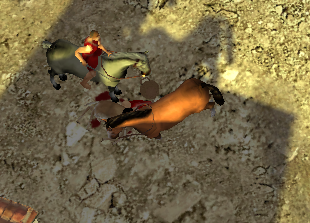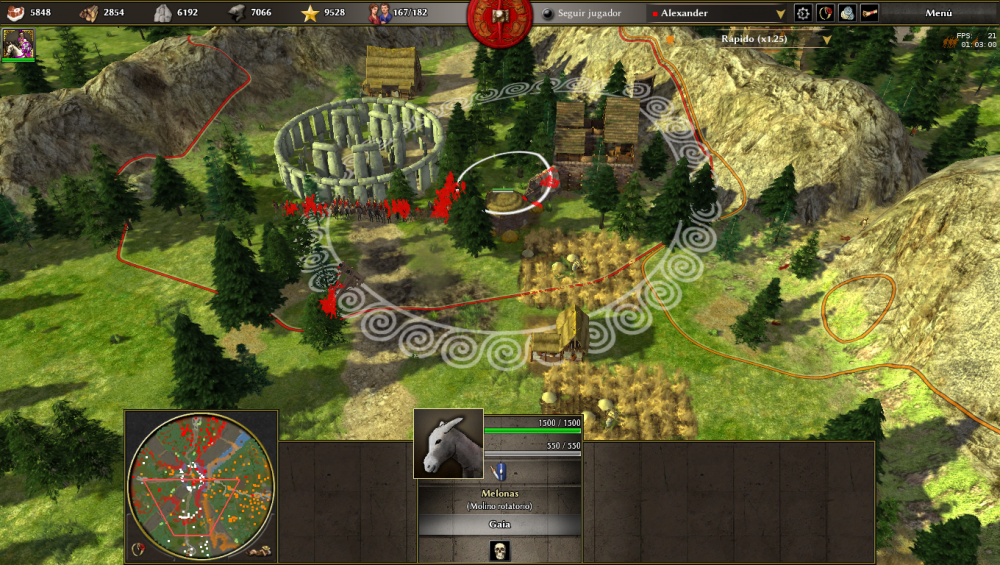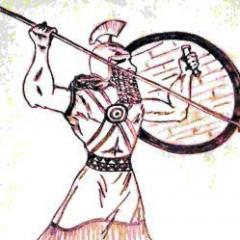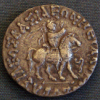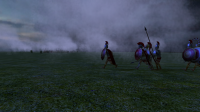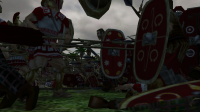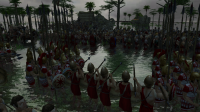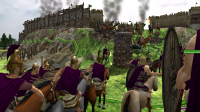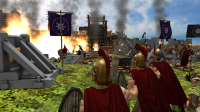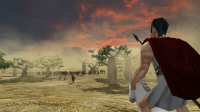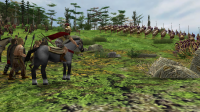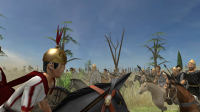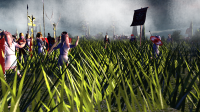Leaderboard
Popular Content
Showing content with the highest reputation on 2018-06-15 in all areas
-
3 points
-
Another topic for helmets, for now i have this: From other topics i have this: The first helmet its recorded but says its damaged because my secondary hard drive is damaged so i used VLC to fix the video now its only visible through that program, i'll see if YouTube could handle the video later.rome_helmets.7z2 points
-
Jebel Barkal - Illustrated Walkthrough Jebel Barkal is the holy hill at the Kushite city Napata at the Nile river, see release announcement. The procedurally generated Napata city spawns attackers reoccuringly. This article presents some common strategies and tactics to become successful. Introduction 9 weeks of development, including 6 weeks of playtesting went into both this map. The guide is the result of the experience made while playteting and most of the screenshots come from these matches. Time to thank @Skhorn for the creation of the mountain template, @Sundiata for the consultation on the history and geography, and the playtesters: nani, Hannibal Barca, smiley, bb, temple, fpre, Dizaka, faction02, ValihrAnt,Uran238cz, s0loooy0, FeldFeld, causative, servo, borg-, mapkoc, CAGD_lulofun, ITRELLES1, gaius22, Dunedan, Imarok, santa, tgodtaylor, AlexanderKirck, s0600204, Emperior, d_stan, mord, Vladislav, Cesar, Vick, Retardado, Medrannozz, TYLER1, Angen. "Jebel Barkal" random map Procedural Cityscape Generation (The following screenshots were taken at the lowest quality, because my graphics card is cheap.) Attacker Waves The city starts attacks on players about all 5-7 minutes. Each of the buildings of the city spawns a different set of attackers. For instance the temples spawn only champions and the elephant stables only elephants. Players can chose a difficulty level at the gamestart. It will influence the total attackercount and city fortifications proportionally. However, since the city is randomized each matchstart, the resulting difficulty level can vary tremendously (most importantly the number of elephant stables on a normal map can be between 0 and 9). In Nomad mode, the first attack is delayed. Docks and Naval Warfare The nile river makes up less than 10% of the map area, yet it is vital to survive and thrive. Some players (most famously nani) start building docks in the first two minutes already. The dock gives you faster food income than fields. Additionally it continues to generate food income while your units on land are either fighting or garrisoned. The dock also adds as a dropsite that is far away from gaia as possible. So women have a good chance to gather there without being killed off. Even outside of the territory. Notice that players sometimes can only win by having some ships around while all enemies wiped out on land. So the river is important from the first to the last minute! Players compete for the final stand on the sea When gaia was too strong for all players, the winner is decided on the sea. So always keep an eye on your enemies ship activities. Don't keep the backside of your city unattended. Once the sea is indisputed, the shoreline can be wiped without great losses. Hunting Elephants, rhinos and boars are valuable huntable animals, because once attacked, they follow you back to your base where you can easily kill and hunt them. Use this trick to boost your economy in the first 5 minutes while already getting some units to defend. If you start out as Mauryans, use your Worker elephant and immediately start hunting in the desert. Wood The players that start in the desert start with much less wood than the players that start in the fertile banks of the nile river. To compensate, these players start with treasure that give them an huge boost. Deserted players can and should build a dock much sooner. The roads leading from and to Napata provide some desperately needed trees for deserted players. Metal/Stone In the fertile banks of the river, there are very few mines. Players have to get out into the desert. Since it can be more sustainable than fighting for mines in the desert, it is recommended to start trade near the nile soon (which incidentally is historically accurate too :-)). Few trees but abundance of mines north of the river. Treasures/Hill There are few treasures at the pyramids and many treasures on the hilltop. They are guarded by Kushite defenders however. Experienced players will find the best opportunity to hunt the treasure at the pyramids. After taking out the Kushite units on the hilltop, players have a chance to build a civic center on the hilltop which can be very easy to defend and provide a perfect place to remain the Last Man Standing. The city contains treasures too, but these are hard to reach due to the Walls and City Patrols. Not a cakewalk. The hill is easy to defend once conquered. A long wonder victory duration ensures that players - or gaia for that matter have chance to break fortifications. Surviving the first wave Gaia attacks all 5-7 minutes and leaves a bit more time between waves in later stages of the game. Make sure to have at least 30 ranged units to defend your base then. Place your fields in the back of your base. Until the first wave started, keep your units in the back of the base. This way the gaia attackers might be deflected by your enemies encountered on the way. Don't expose your units to enemy fire unless it is really important, as here In Nomad mode, players end up with one piece of the fertile land each Walling After the first wave, quickly build a palisade, so that gaia units have no chance to reach your units. Pay special attention to elephants. Rebuild destroyed palisades as quickly as possible. Remember at which places gaia units managed to walk past your walls and fix all holes. The irrigation canals act as a natural barrier, so you only need to wall a small area. Multiple layers of walls provide additional security and obstacles. Do team walls. Mauryans benefit from their stone walls that only cost wood and Carthaginians have walls that are three times as strong. Irrigation canals provide a natural shield Cheap but effective - wooden walls Quickwalling - Fixing walls even during an attack The first line of defense fell Irrigation Canals can only be crossed at one point each Close the gate quickly! double palisade walls to defend an elephant rush A successful team wall Attacking The Opponent Unless you are playing with custom rules, remember that the goal is to defeat your enemy. So in general it is recommended to not invest resources on destroying Napata, but focus your attacks on the enemy players. If you wait for a Napata wave to end, you can be sure to have enough units remaining for an attack and your city is not left empty when an attack starts. Focus on the player opponents first Only invade the city when overwhelmingly outnumbering the enemies. This fortress was too close - an easy target for Elephants.1 point
-
1 point
-
1 point
-
This may come handy: http://profesorjuliodapenalosada.blogspot.com/2016/03/giorgio-albertini.html1 point
-
1 point
-
That would be a nice feature and would be unified with the rest. I guess that's because they are not defined in one json file with their specific characteristics. If they were in one place with a file that could be extended like you can with prototypes that wouldn't be the case1 point
-
First one is a bit too much yellow. Nice work. Can't wait to have them in vanilla1 point
-
I'll add this to my workload after Terra Magna and Millennium AD is released. There are currently tons of errors though.1 point
-
1 point
-
I'm trying to work on the unit simulation files and actor files, there seems to be a lot of errors in the civ file.1 point
-
1 point
-
Plans on adding this to Terra Magna? (Plus other factions like the Epirotes and Thebans from DE)1 point
-
Mmmh and I guess you can't use decals because they would be shown all the time... And I guess the aura code draws line and not sprites ?1 point
-
The only way I found to make the nice fancy aura graphic work was to use the footprint code, which only uses quads. It also creates other problems such as ungarrisoning and hit box size.1 point
-
The lag on big maps is known, advertised and being worked on. Diplomacy does work it's just that it's hard to bribe the AI. Thanks for the feedback and welcome to the forums1 point
-
1 point
-
for some reason aren't in early stages(Olmec) or mayan culture. and Zapotecs represented are from triple alliance time frame.1 point
-
I updated the version now to 3.1. The most interesting changes are now that units and formation behave smarter. Formation fight more together. Also AI attacking might be better and smarter, cause units don't auto capture anymore. Download at https://0ad.mod.io/formation-fighting-mod, until it is signed.1 point
-
1 point
-
@Lion.Kanzen So, no tlahuiztli for the Zapotecs? Since you mentioned that it is from the Post-classic period. The same thing applies to the extented ichcahuīpīlli which is designed similar to a tlahuiztli (almost covering the whole body) I've seen it in several illustrations about Mesoamerican warfare.1 point
-
Shaved Warriors The shaved warriors (cuachicqueh) was the most prestigious Mexica warrior society. They were characterized by shaving their heads, except for a long braid over the left ear. They painted their faces and bald with two colors, one half blue and the other half red or yellow. They served as imperial shock troops, participating in special tasks, as well as providing assistance on the battlefield when necessary. It was required to have captured more than 6 captives and to have achieved dozens of other exploits to achieve this rank. Apparently, these warriors rejected captaincies in the army to remain active fighters on the battlefield. They were recognizable by their yellow tlahuitzli. When the warrior reached this rank, he swore not to step back during a battle; this under the warning that in case of missing this oath he would have to experience the pain of death at the hands of his companions was the most prestigious warrior society – their heads were shaved apart from a long braid over the left ear. Their bald heads and faces were painted one-half blue and another half red or yellow. They served as imperial shock troops and took on special tasks as well as battlefield assistance roles when needed. Over six captives and dozens of other heroic deeds were required for this rank. They apparently turned down captaincies in order to remain constant battlefield combatants. Recognizable by their yellow tlahuitzli, they had sworn not to take a step backward during a battle on pain of death at the hands of their comrades Others Broadly, Aztec army ranks were similar to the modern Western rankings of “General” and "Major”, as were the groupings of warriors into categories such as “enlisted men” or “officers”. However, while parallels can be drawn between the organization of Aztec and Western military systems, as each developed from similar functional necessities, the differences between the two are far greater than the similarities. The members of the Aztec army had loyalties to many different people and institutions, and ranking was not based solely on the position one held in a centralized military hierarchy. Thus, the classification of ranks and statuses cannot be defined in the same manner as that of the modern Western military.[8] The commoners composed the bulk of the army; the lowest were porters (tlamemeh [t͡ɬaˈmemeʔ]) who carried weapons and supplies, next came the youths (identified by the top knot hairstyle they wore) of the telpochcalli led by their sergeants (the tēlpochyahqueh [teːɬpot͡ʃˈjaʔkeʔ] "youth leaders"). Next were the commoners yaoquizqueh. And finally, there were commoners who had taken captives, the so-called tlamanih. [t͡ɬaˈmaniʔ] "captors". Ranking above these came the nobles of the "warrior societies". These were ranked according to the number of captives they had taken in previous battles; the number of captives determined which of the different suits of honor (called tlahuiztli [t͡ɬaˈwist͡ɬi]) they were allowed to wear, and allowed them certain rights like being able to wear sandals, jewelry, alter their hairstyles, wear warpaint, carry flowers onto the battlefield, pierce, and tattoo themselves. These tlahuiztli became gradually more spectacular as the ranks progressed, allowing the most excellent warriors who had taken many captives to stand out on the battlefield. The higher ranked warriors were also called "Pipiltin". Tlamanih (captor) was a term that described commoners who had taken captives within the Aztec army, particularly those who had taken one captive Cuextecatl Two captive warriors, recognizable by their red and black tlahuiztli and conical hats. This rank was introduced after the military campaign against the Huastec led by Tlahtoāni Ahuitzotl Papalotl[ Papalotl (lit. butterfly) were warriors who had taken three captives; this rank wore "butterfly" like banners on their backs Merchants Merchants, called pochteca (singular: pochtecatl), were perhaps the most valued source of intelligence to the Aztec empire. As they traveled throughout the empire and beyond to trade with groups outside the Aztec’s control, the king would often request that the pochteca return from their route with both general and specific information. General information, such as the perceived political climate of the areas traded in, could allow the king to gauge what actions might be necessary to prevent invasions and keep hostility from culminating in large-scale rebellion. As the Aztec’s empire expanded, the merchant’s role gained increasing importance. Because it became harder to obtain information about distant sites in a timely way, especially for those outside the empire, the feedback and warning received from merchants were invaluable. Often, they were the key to the Aztec army’s successful response to external hostility. If a merchant was killed while trading, this was a cause for war. The Aztecs rapid and violent retaliation following this event is testament to the immense importance that the merchants had to the Aztec empire.[11] Merchants were very well respected in Aztec society. When merchants traveled south, they transported their merchandise either by canoe or by slaves, who would carry a majority of the goods on their backs. If the caravan was likely to pass through dangerous territory, Aztec warriors accompanied the travelers to provide much-needed protection from wild animals and rival cultures. In return, merchants often provided a military service to the empire by spying on the empire's many enemies while trading in the enemy's cities.[12] They were able to earn their protection while further helping their empire. Prior to mobilization, formal spies called quimichtin were sent into the territory of the enemy to gather information that would be advantageous to the Aztecs. Specifically, they were requested to take careful note of the terrain that would be crossed, fortification used, details about the army, and their preparations. These spies also sought out those who were dissidents in the area and paid them for information. The quimichtin traveled only by night and even spoke the language and wore the style of clothing specific to the region of the enemy. Due to the extremely dangerous nature of this job (they risked a torturous death and the enslavement of their family if discovered), these spies were amply compensated for their work.[15] The Aztecs also used a group of trade spies, known as the naualoztomeca. The naualoztomeca were forced to disguise themselves as they traveled. They sought after rare goods and treasures. The naualoztomeca were also used for gathering information at the markets and reporting the information to the higher levels of pochteca1 point
-
1 point
-
Compared to AoE2's AI it is pretty smart. In fact, I think one of the main advantages 0 A.D. has over AoE2 is the possibility of not having a stagnant AI - both in the sense that at some point it "gives up on life" and just let their people sitting there doing nothing, and in the sense that there's nothing that can be done to change that (well you can mod the AI, but you know, closed source game, not that easy). I'm taking a look at Petra... 18k lines of JS. Maybe I can come up with some small tweaks.1 point
-
1 point
-
The amount of people complaining about the AI being too hard seem to disagree with that statement.1 point
-
1 point
-
Thrace is not really my cup of tea, so I'm not sure of how much help I can be. However, let's give it a try The Odrysian kingdom, which was a union of dozens of tribes and minor kingdoms, covers Thrace in 0 A.D.'s timeframe. Getting units is relatively easy; some Thracians are already in game as part of other civilizations. Creating appropiate structures would be more difficult; wood was a primary building material, so I doubt anything is still standing today. Anyway, about the unit rosters. Thracians - and Dacians - were famed and feared for their use of one-handed sickle-swords and two-handed scythe-swords (both called falx) and slightly curved sword-spears (the romphaia). A short, forward pointing sickle-dagger-sword (the sica), also used by Illyrians and Romans, was their favourite side-arm and "national weapon". (Giving separate names for similar weapons is a modern convention; sica-falx-romphaia probably formed a continuum.) However, Thracians often prefered using javelins, spears, and bow-and-arrows to close combat. Thracians frequently adopted Greek-style helmets (but not Illyrian helmets, interestingly) and armour, sometimes after the Greeks switched to other types. On the other hand, Thracians were also notably influenced by their Scythian neighbours. Here's a first proposal for a Thracian unit roster: Village phase: woman fishing boat two-handed falxman (no shield) javelin infantry (pelte shield; see Macedonian) javelin cavalry (pelte shield; see Macedonian) Town phase: healer trader merchant ship pentekonter battering ram rhomphaia infantry (already in game as mercenary for various factions) sword infantry (single-handed falx, pelte shield) spear infantry (pelte shield) archer infantry (no shield) sword cavalry (single-handed falx, pelte shield) spear cavalry (short spear, pelte shield) archer cavalry (no shield) City phase: trireme Greek-style hoplite infantry champion? (royal mercenary guard) Scythian-style spear cavalry champion? (royal/noble cavalry; cataphract, with scale armour? and small but heavy round shield with bronze rim) Heroes: Teres I (unified Thrace after the Persians were defeated in Greece) Sitalces (his son; allied with the Athenians, invaded Macedon; greatest extent) Cotys I (gradually conquered the Thracian Chersonesos from Athens) Ranks: basic: partially naked chest?, animal skin cap? advanced: fully clothed, leather helmet elite: leather armour, bronze helmet champion: bronze breastplate1 point
-
What happens with conversion? there are some patches. https://trac.wildfiregames.com/ticket/9971 point
-
There are 4 things I would like to add/change about some of the resources. You can find them in "Wow's Gameplay Proposal" thread, but I'll detail them a bit here: 1. For Metal, I would like to have a "Mine Shaft" object that has a slot next to the mine entrance. Players would "claim" the mine shaft by building a Storehouse upon this slot. Then you can task workers to the mine shaft and they'd enter the shaft and gather the metal. Like Starcraft's Vespene Gas mines the workers would emerge from the mine after a certain amount of time and deposit the metal resource at the slotted Storehouse. To claim such a Metal Mine from an enemy, simply destroy the enemy's Storehouse and building your own. The enemy workers would retreat to their player's nearest dropsite and idle, else face annihilation from you. 2. Stone Quarries would look like large open pit mines on the side of a mountain. Similar to a Mine Shaft, Stone Quarries would have a slot on which you claim the quarry by building a storehouse upon it. Your workers then start mining away in the quarry and drop off the resource at the storehouse. 3. Coin. This is the trading, bartering, and tributing resource. You can also find it in treasures and via loot [especially enemy economic units or economic buildings]. Buying and selling resources occurs in Coin, and Coin is the resource you gather via trading. You use Coin to hire mercenaries and do other things, like buy better weapons and pay your guard units [champions]. 4. Single trees are deleted by construction, while large Groves are not. With groves, you could allow barbarian or guerilla units to "garrison" within them for ambush purposes. A grove where 50% of its wood is harvested would kick out any garrisoned units.1 point
-
1 point

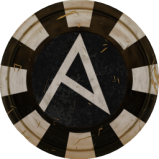
.thumb.png.ce58cea22940c255f5b0a735d5abee36.png)


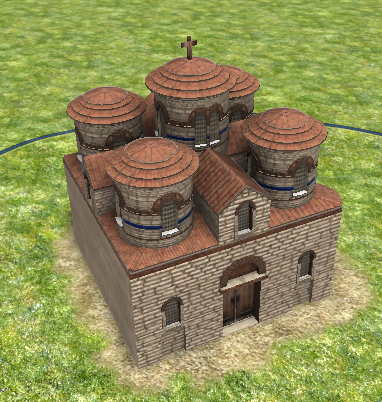
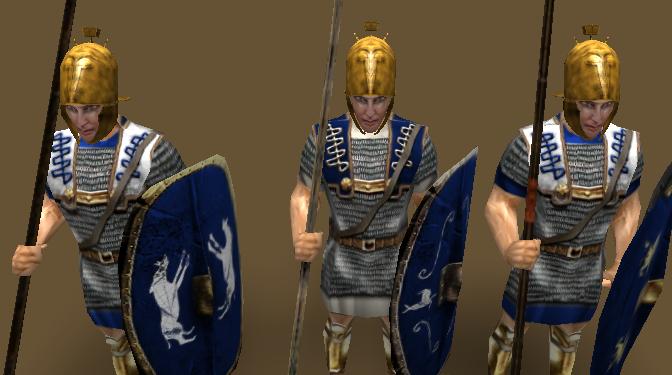
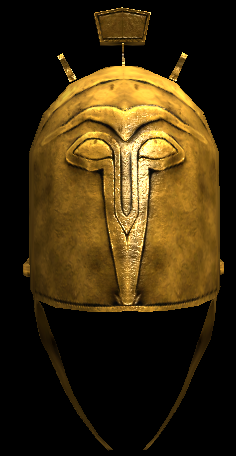
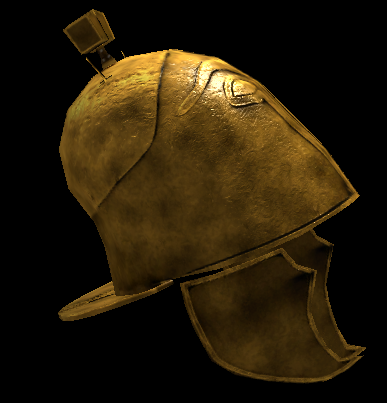
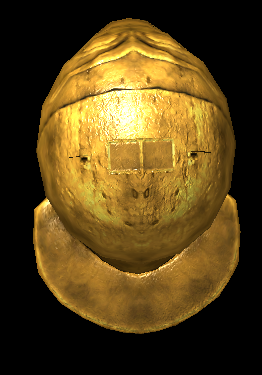
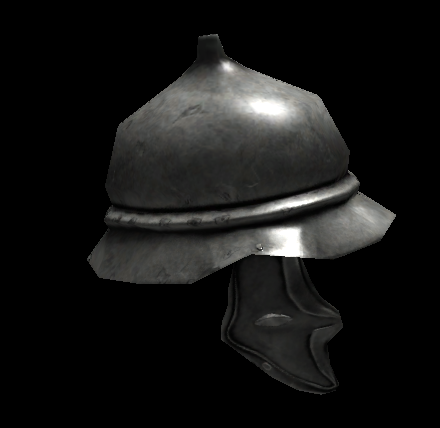
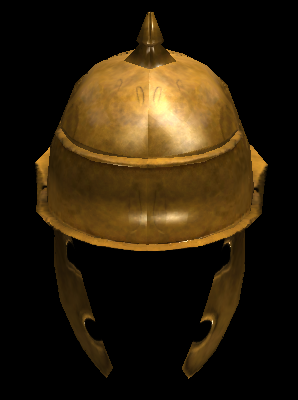
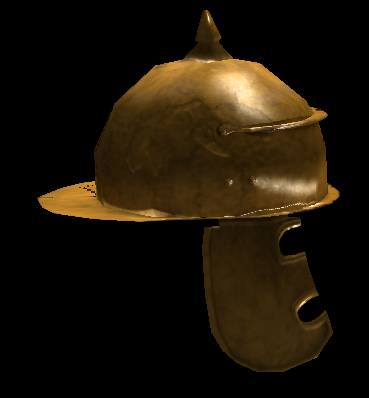
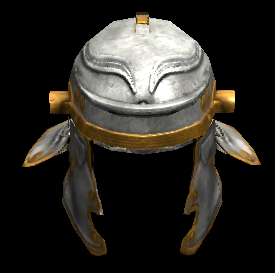
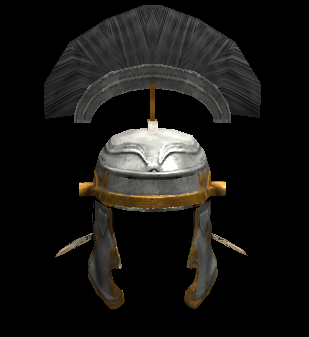
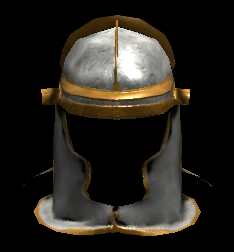
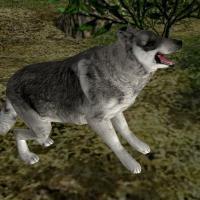
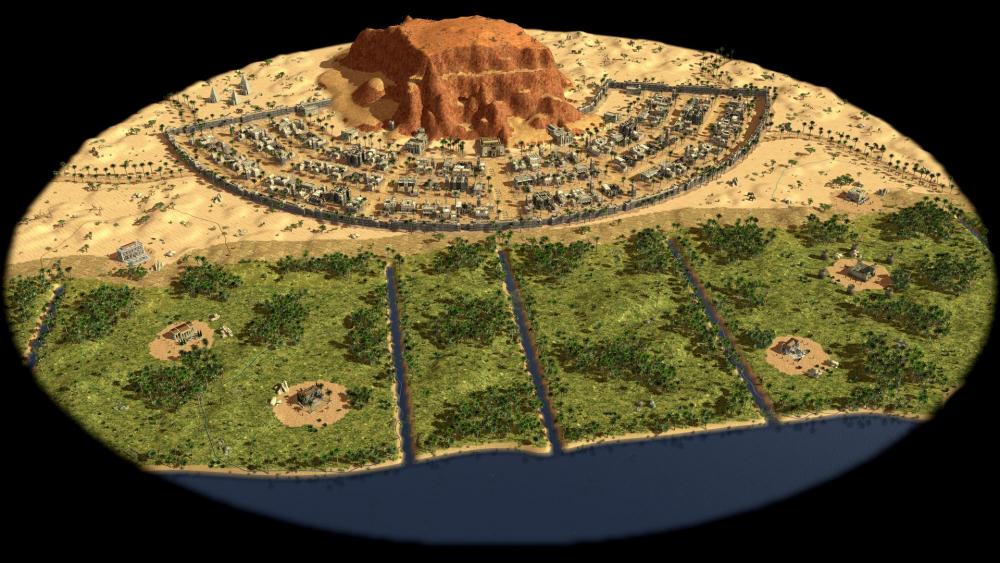
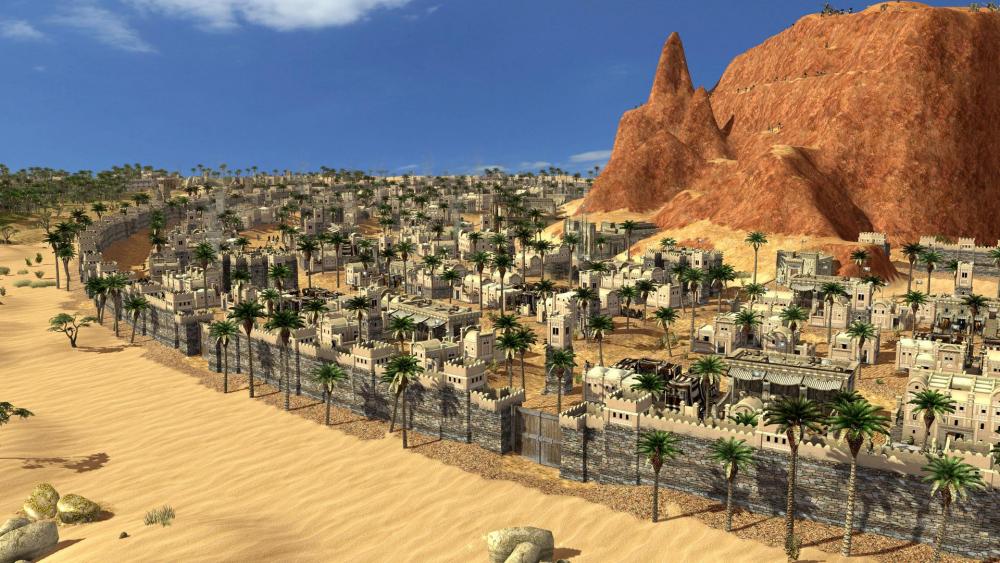
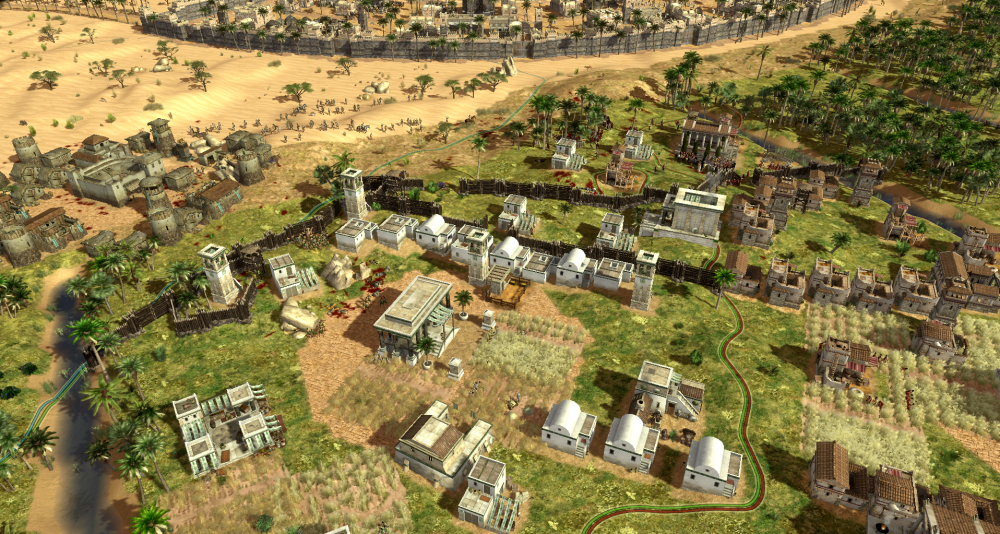
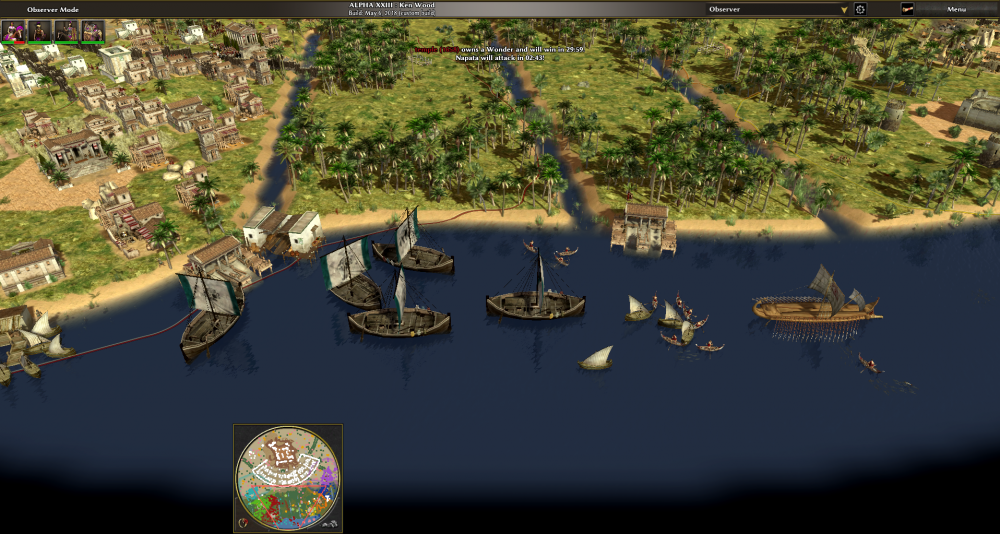
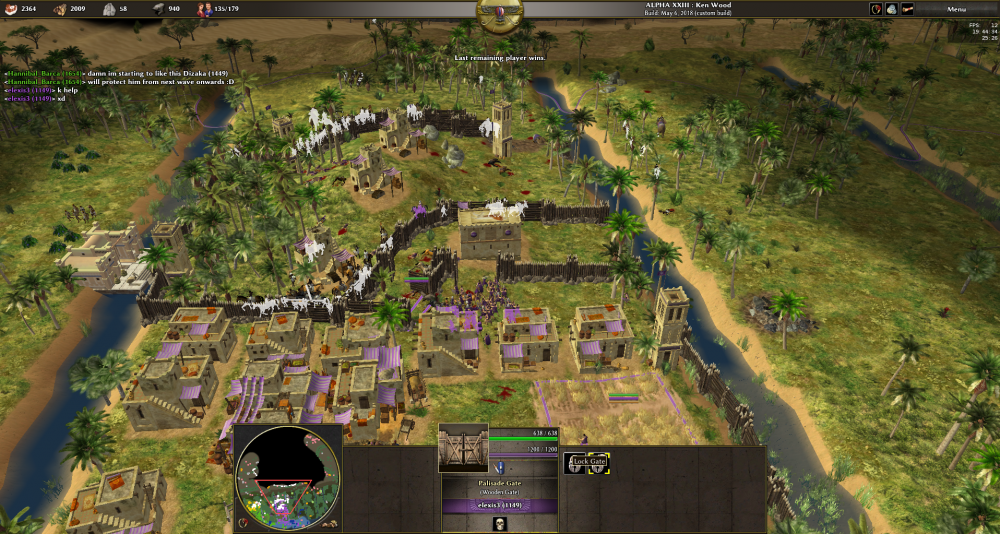
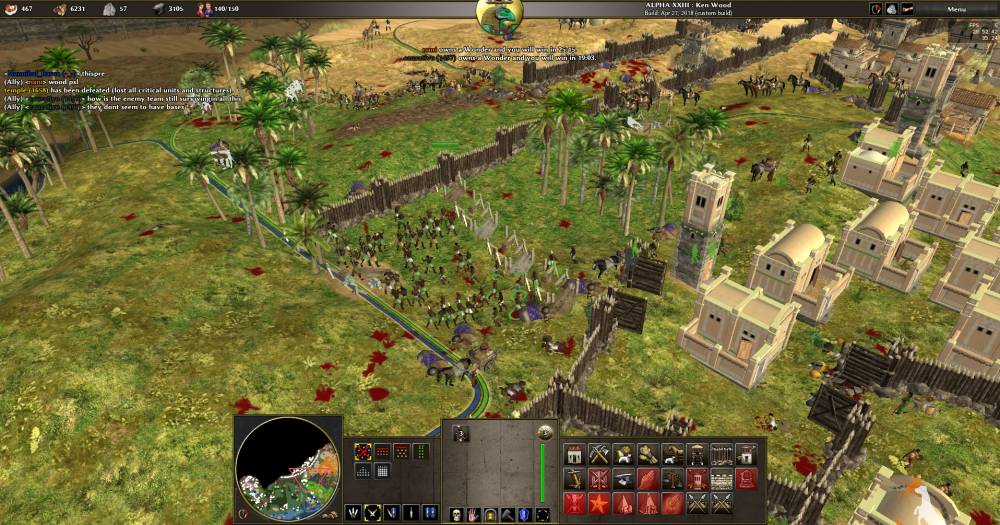
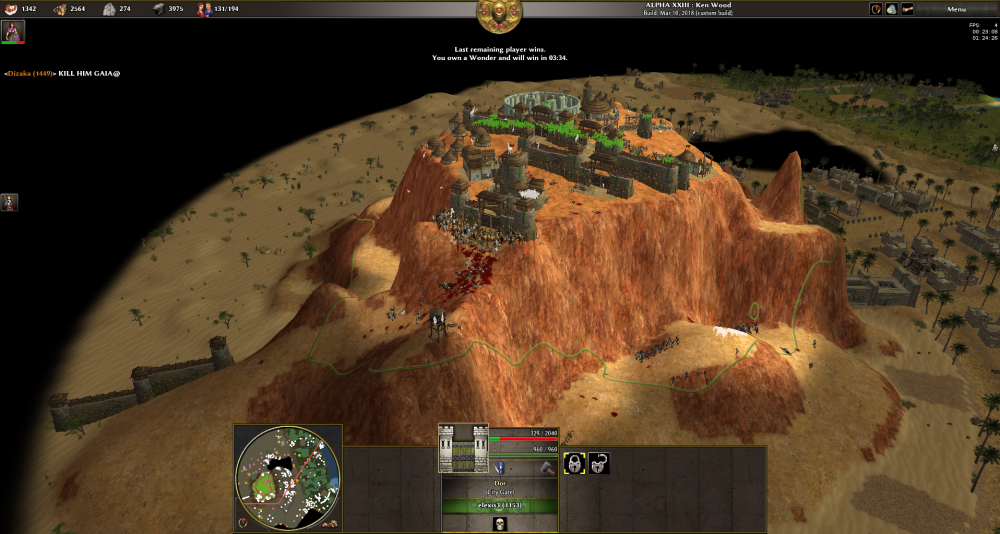
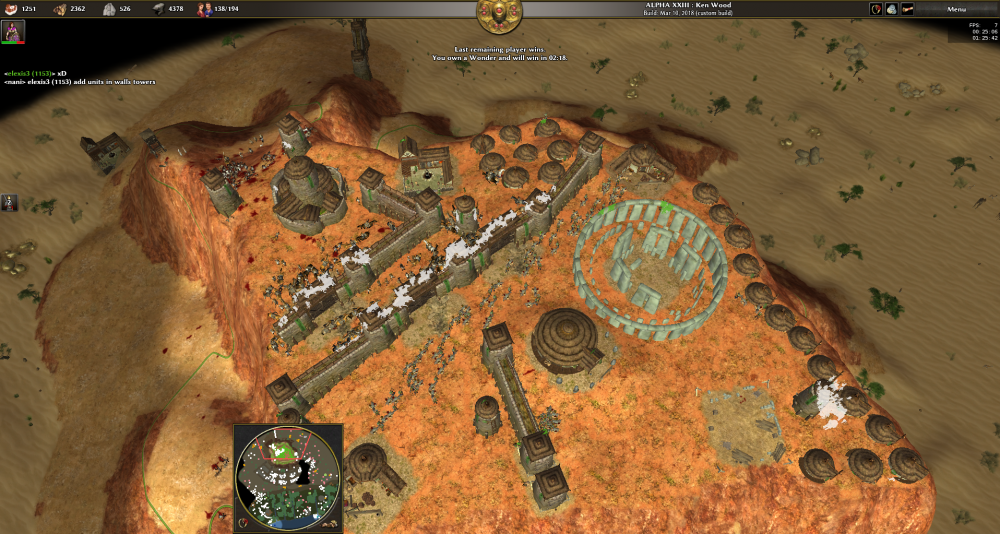
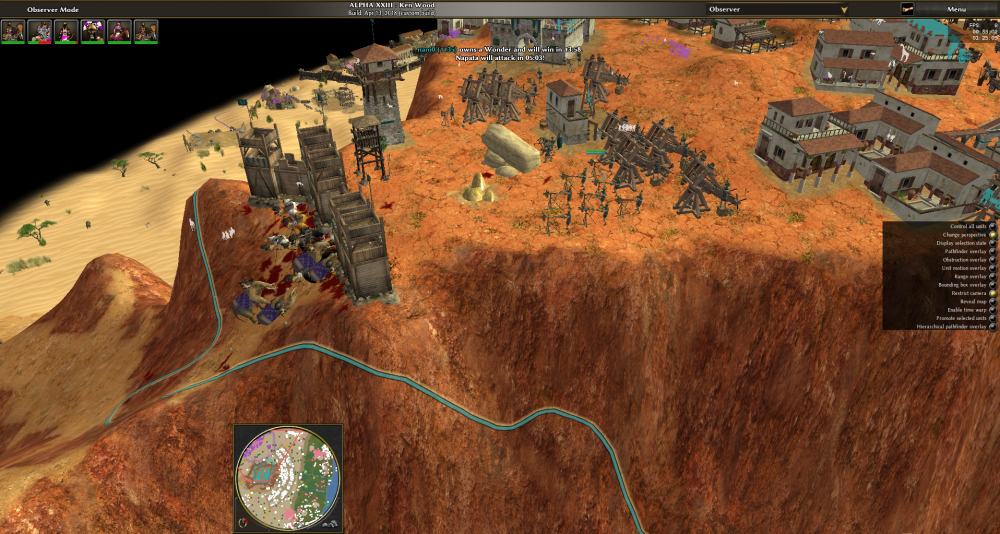
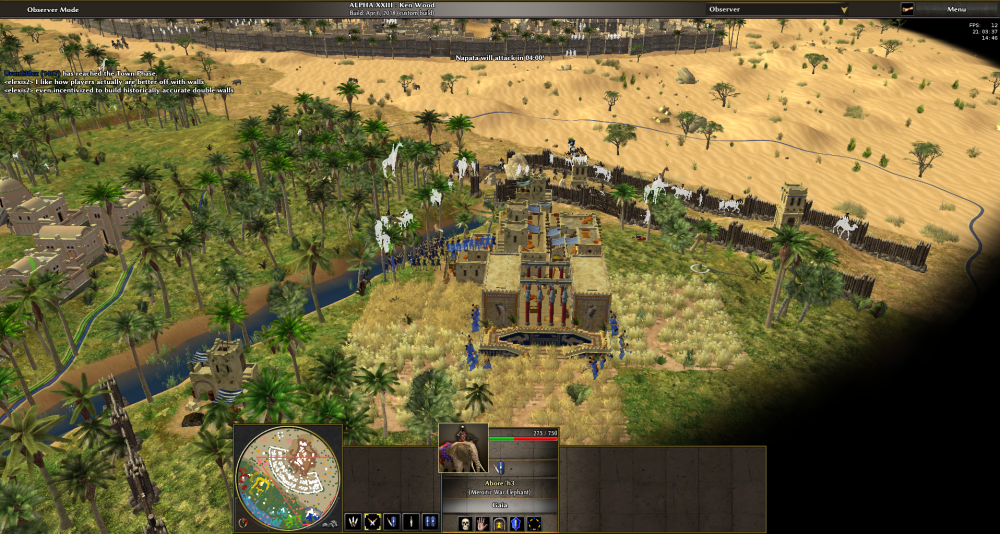
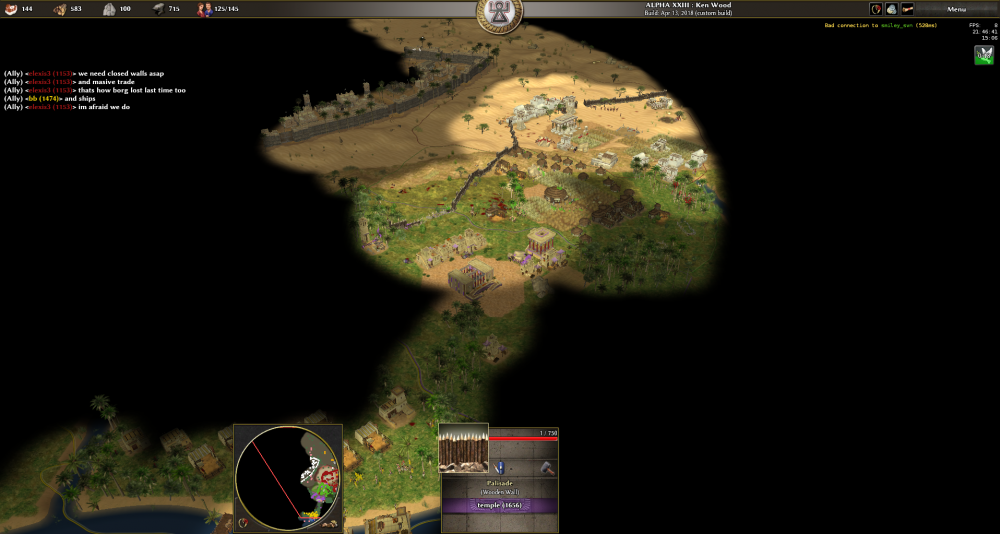
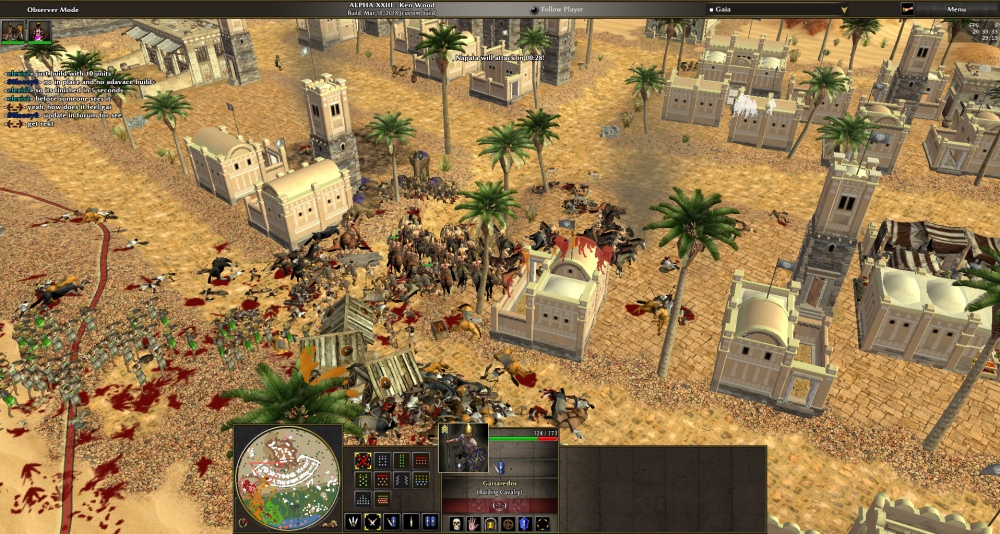
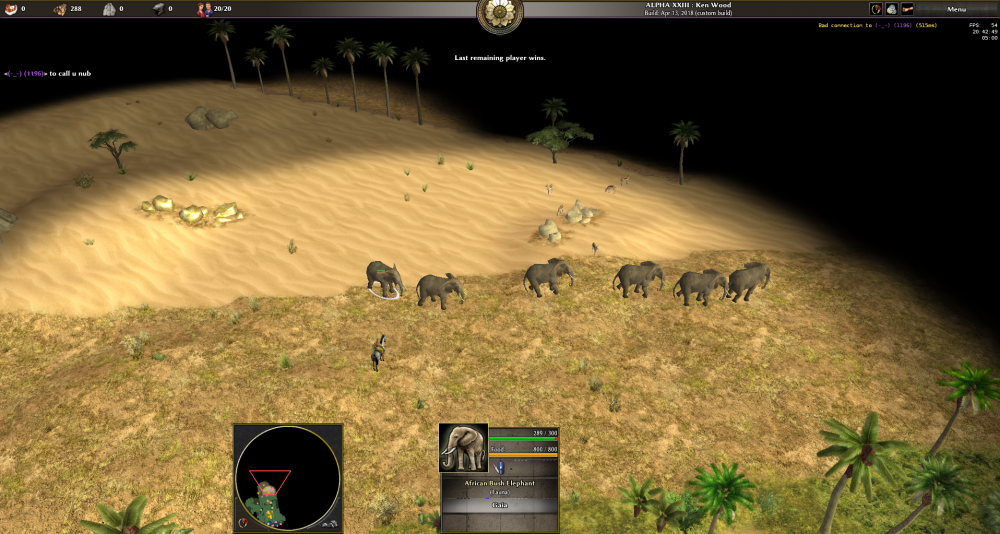
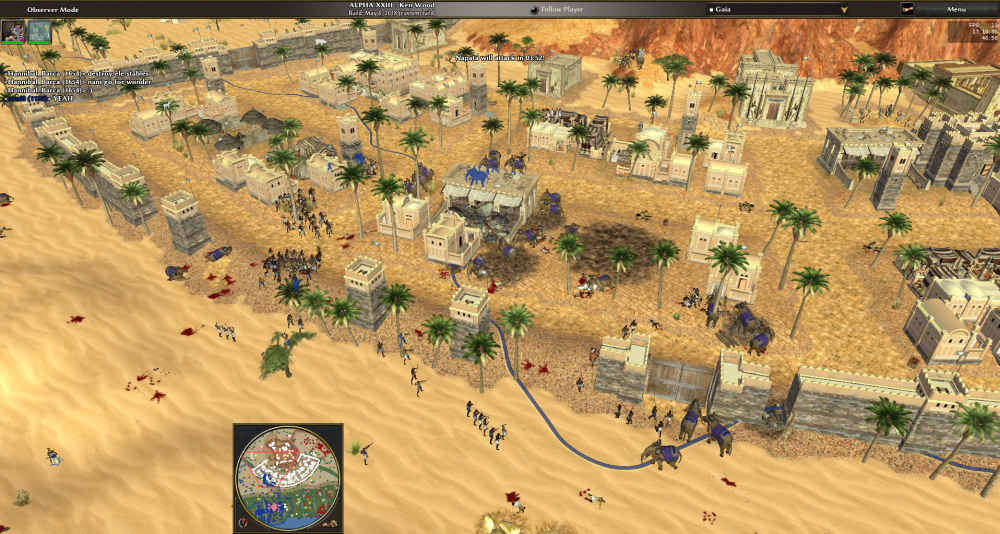
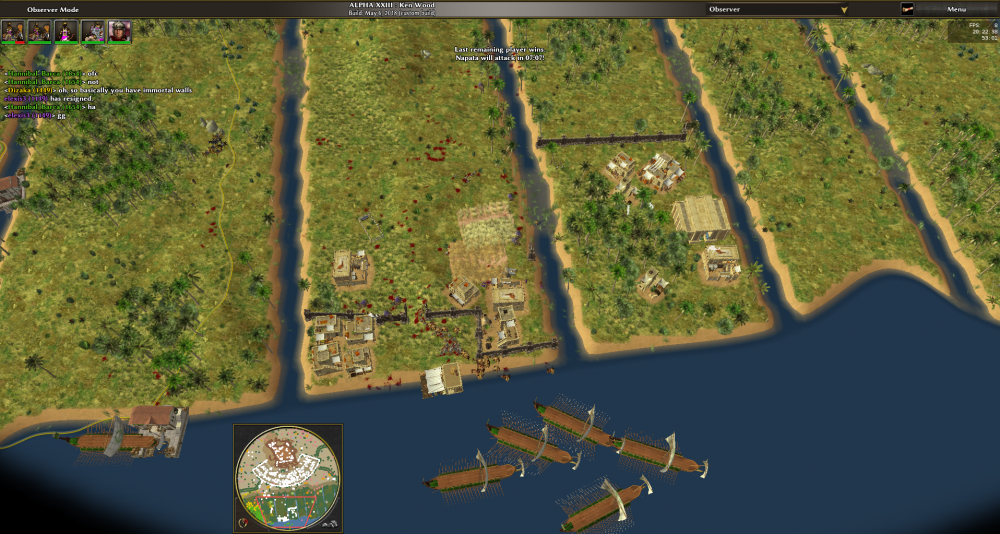
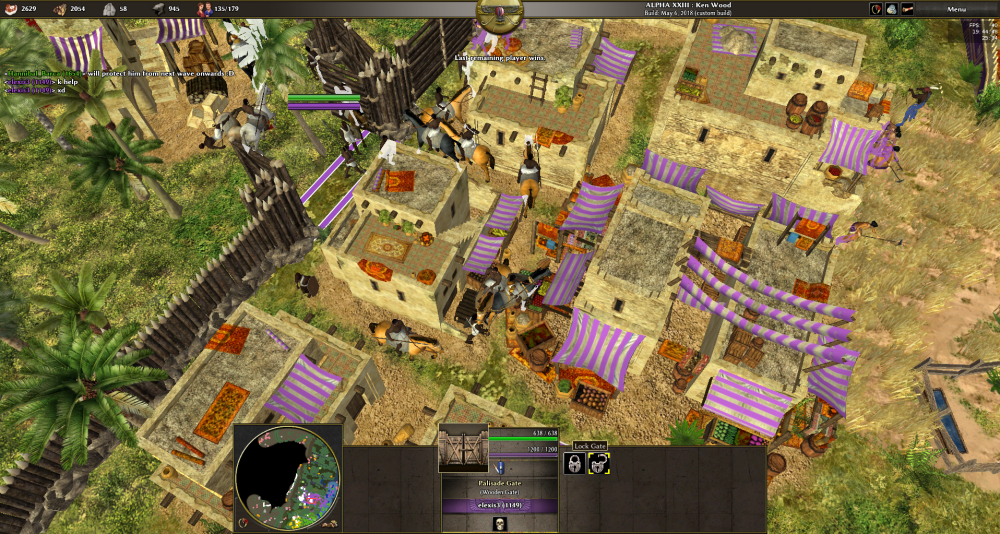
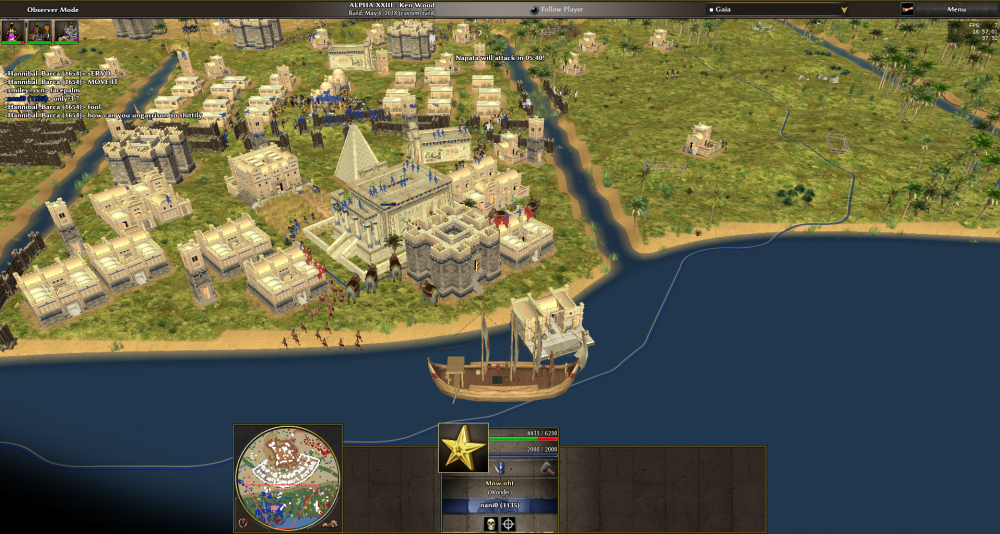
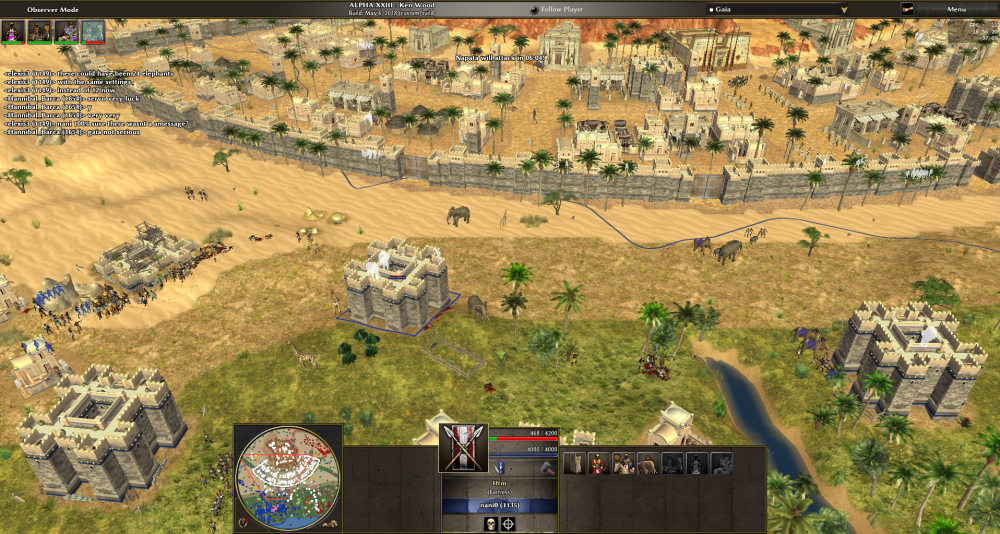
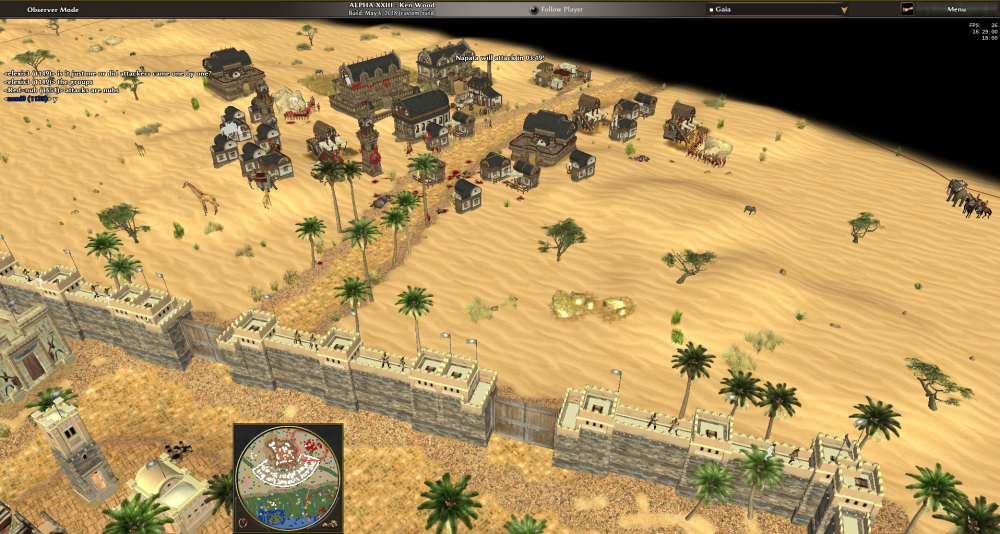
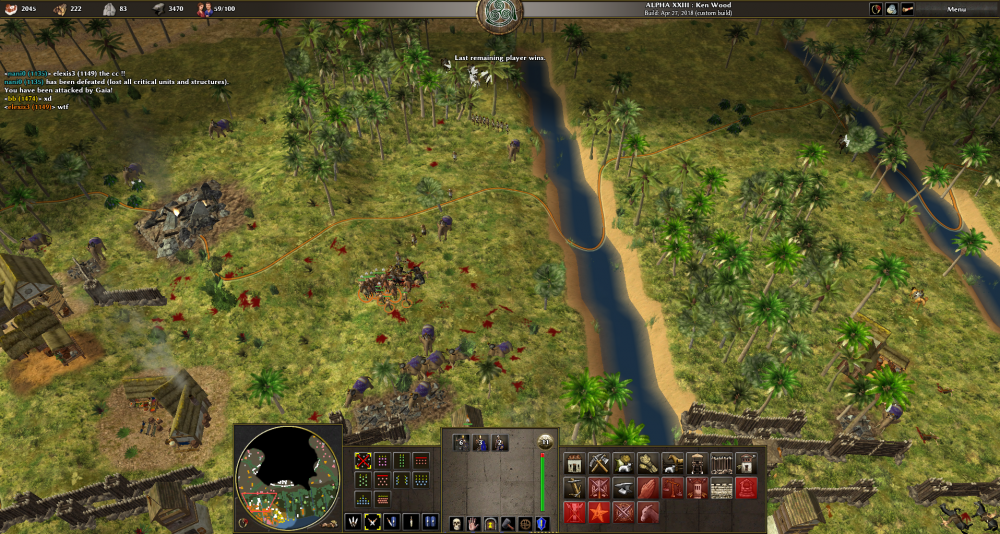
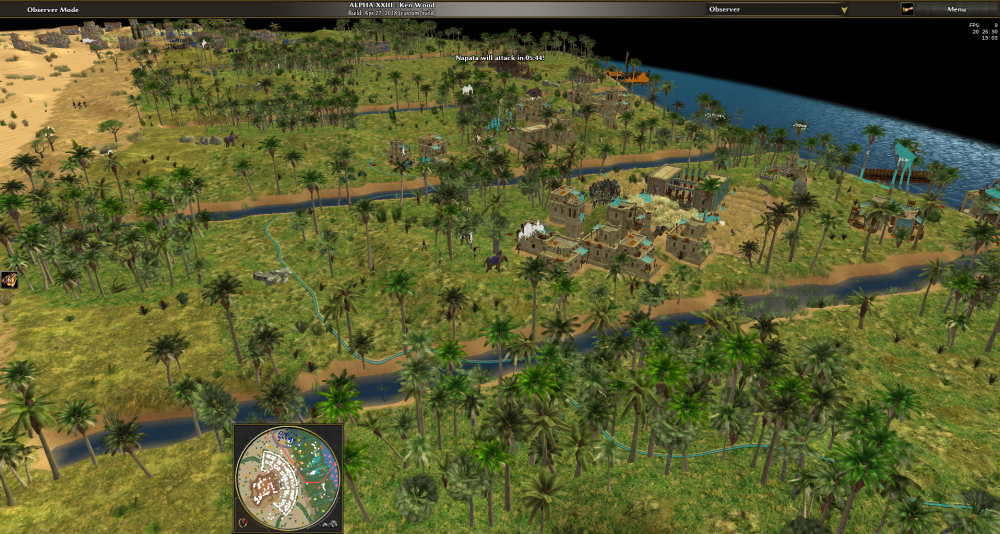
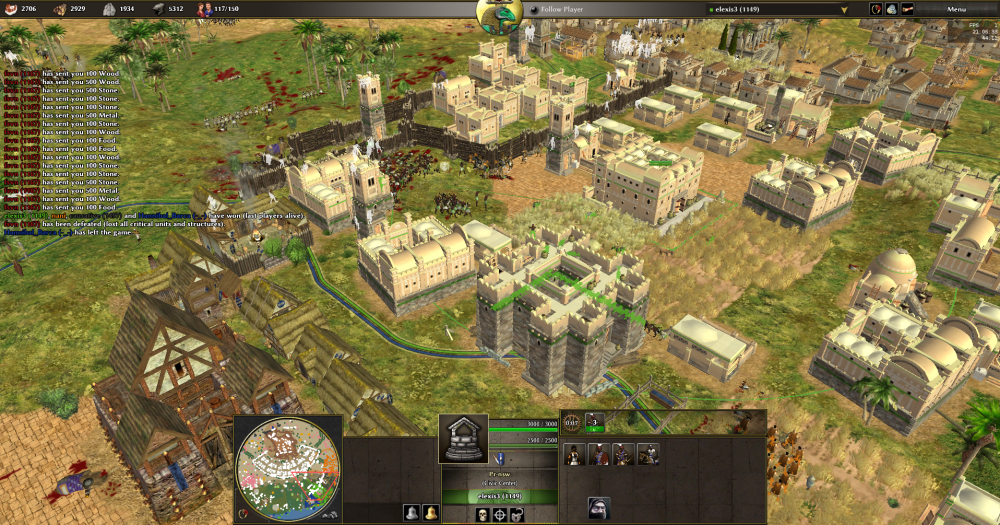
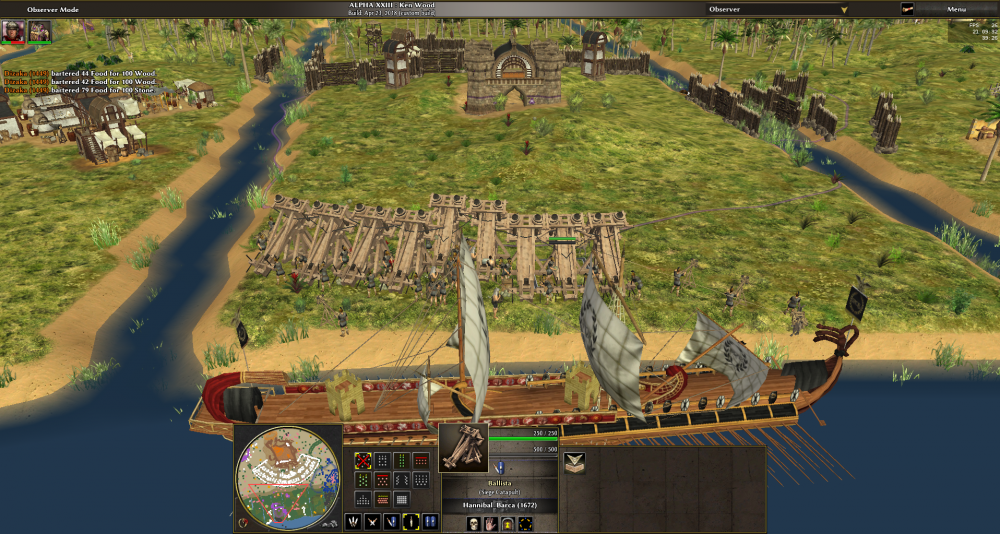
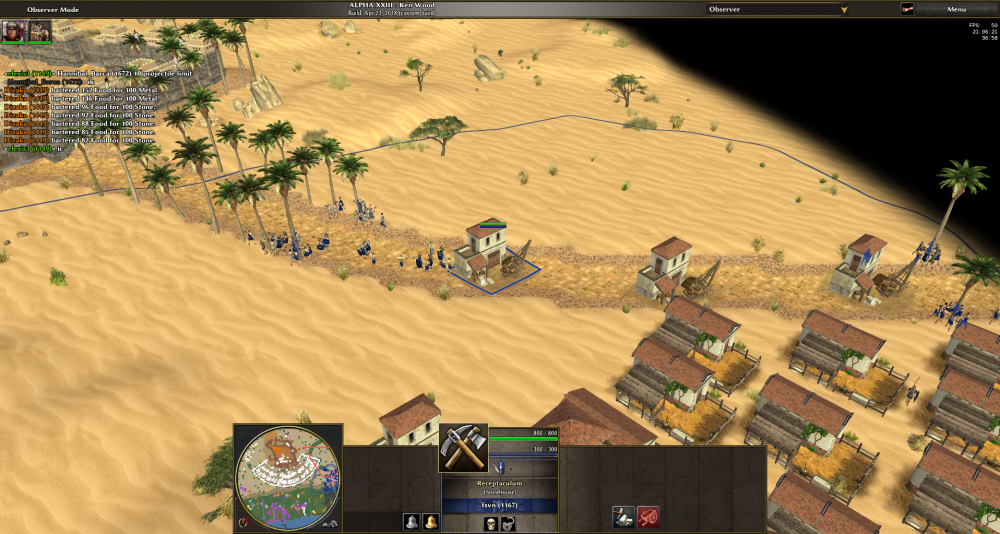
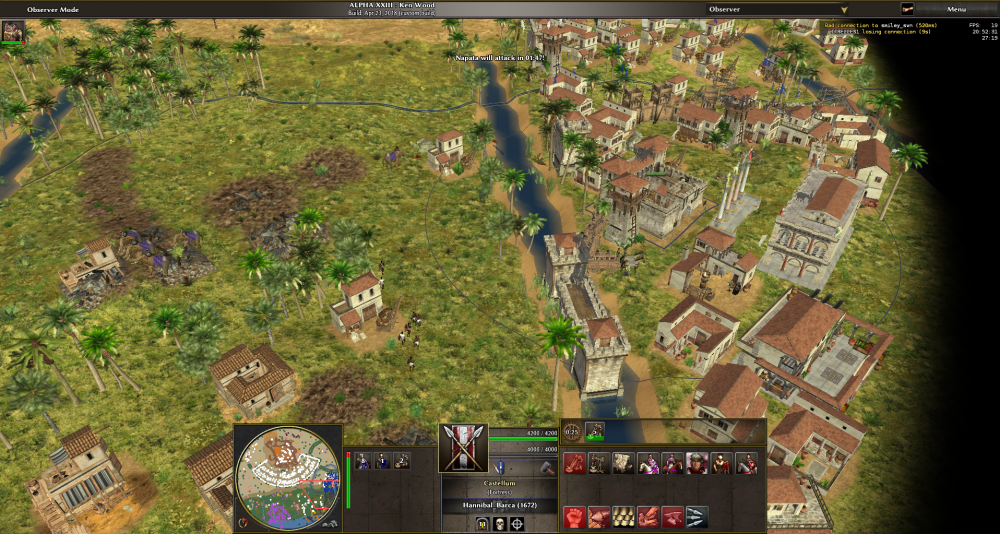
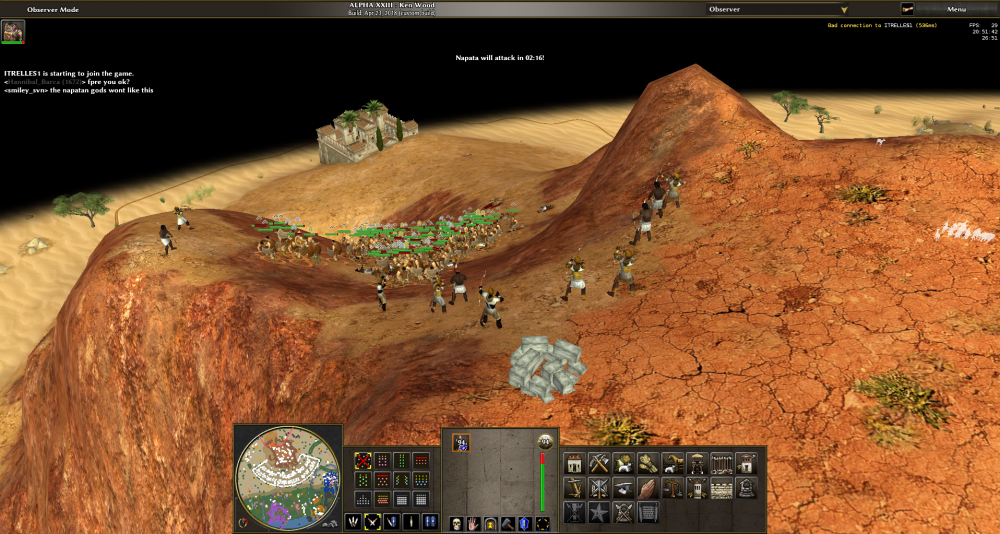
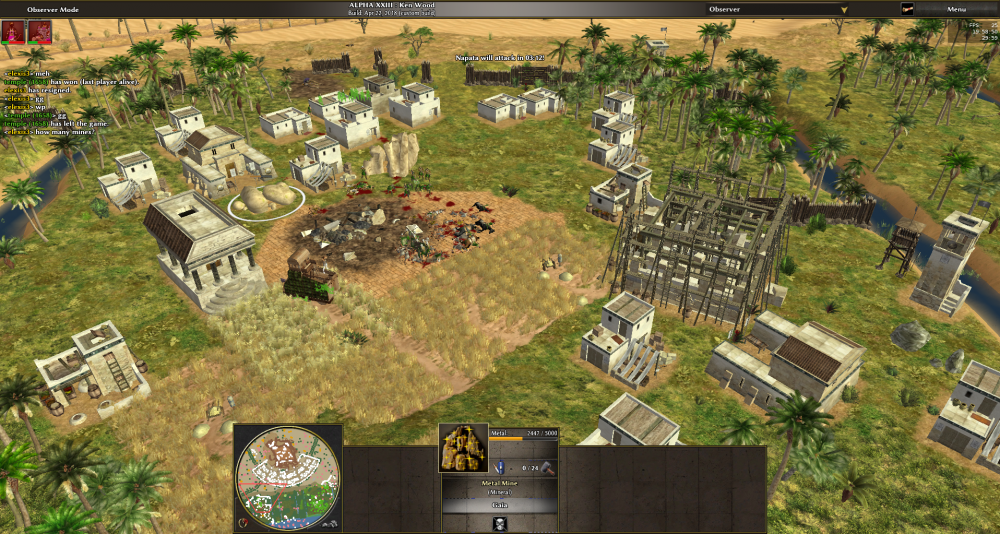
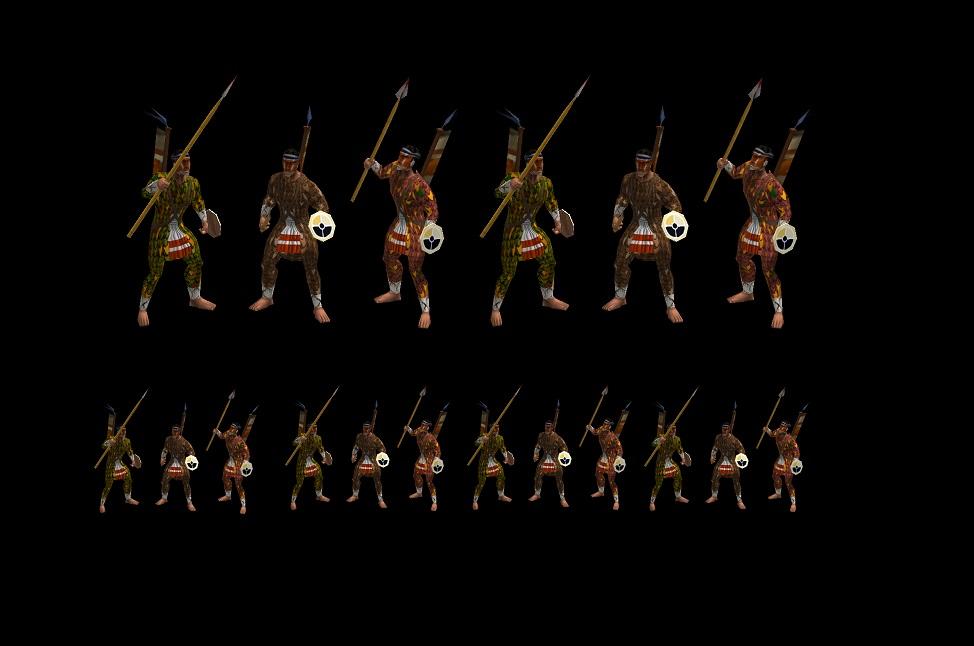
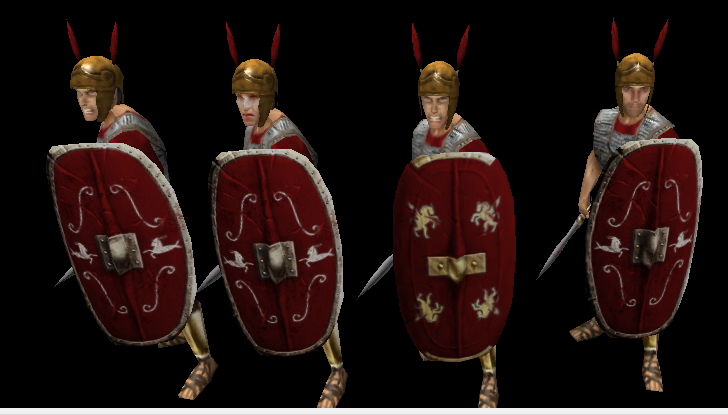
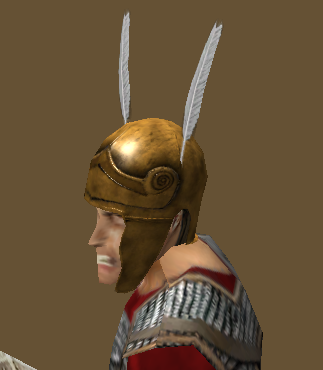
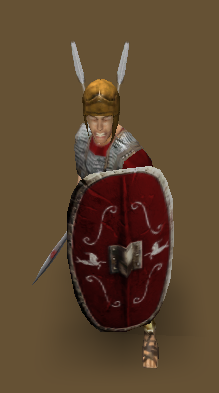
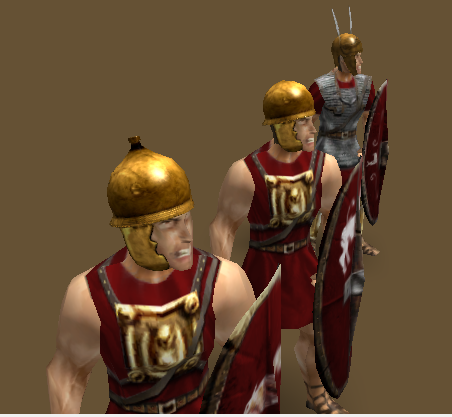

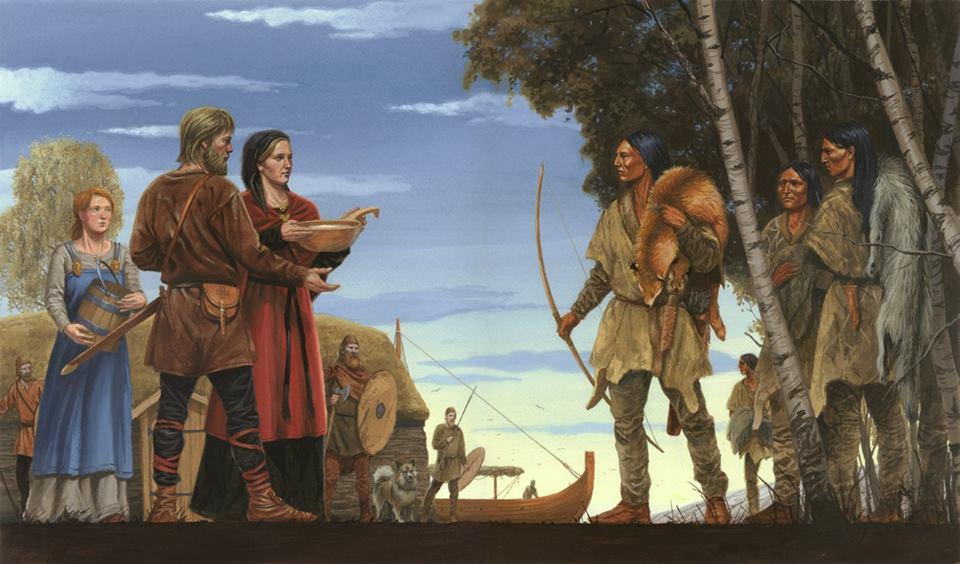
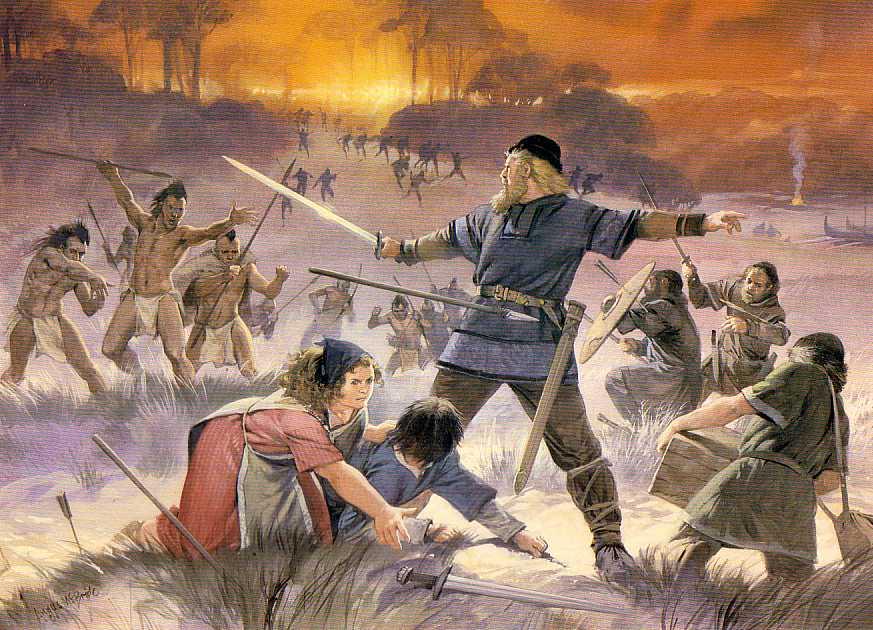
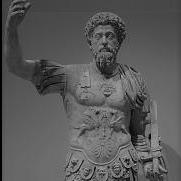
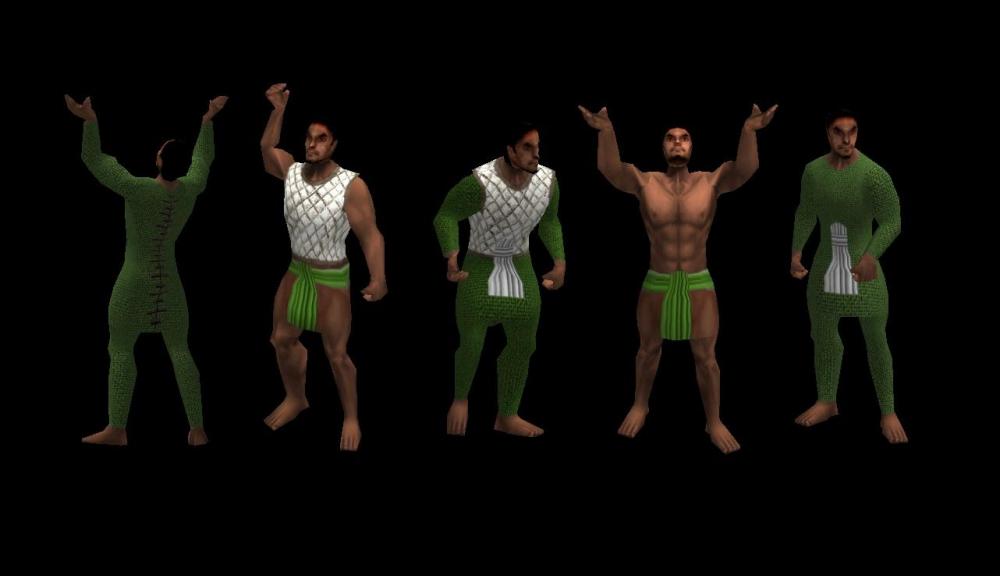
.thumb.jpg.12e114306b64e0d6cb48feac757ea6bd.jpg)
